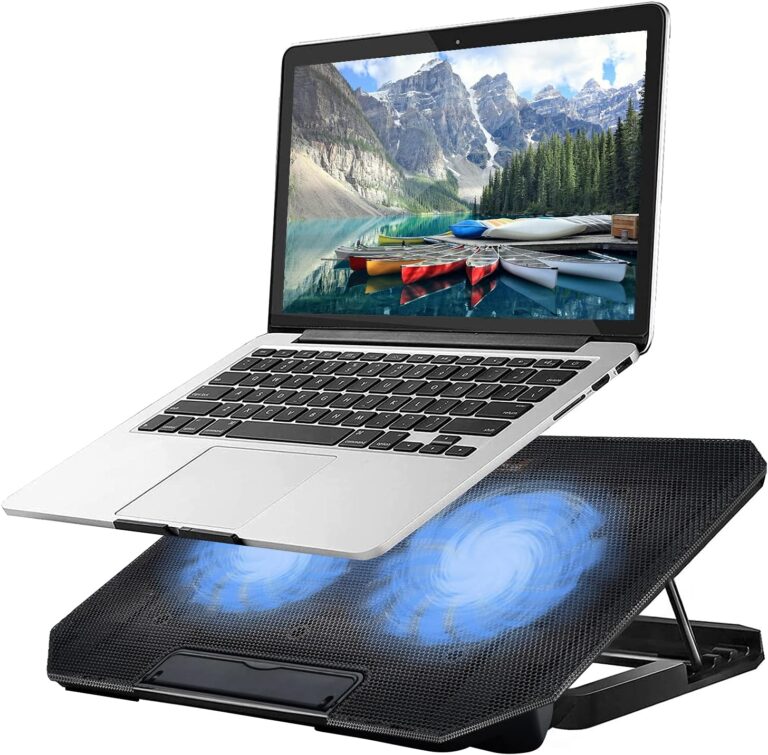Experiencing a sudden black screen and loud fans while using your PC can be alarming, especially when the system does not respond until you force restart it. This issue is common among many PC users, but diagnosing the exact cause can be tricky since multiple factors might contribute. This article explores the potential reasons for a black screen with loud fans, providing a thorough breakdown of hardware and software problems and offering possible solutions to help you resolve this issue.
Understanding the Problem: What Causes a Black Screen with Loud Fans?
When your PC’s screen suddenly turns black, and the fans begin running loudly, it generally indicates a hardware or software malfunction. Several things could go wrong, from overheating and power supply problems to software glitches or driver failures. The key is identifying the root cause of the issue.
Here are some of the most common causes for this problem:
1. Overheating
One of the primary reasons for a black screen and loud fans is overheating. When a computer’s components (especially the CPU or GPU) get too hot, the system might shut down or display a black screen to prevent damage. As the internal temperature rises, the fans spin faster to cool the components, which can make them louder than usual. Let’s understand the causes and fixes of overheating.
Causes of Overheating:
- Dust buildup: Dust accumulation inside the case or on components can block airflow, causing the fans to work harder and less efficiently.
- Inadequate cooling: Poor ventilation, insufficient thermal paste, or a faulty cooling fan can cause components to overheat.
- Overclocking: If you’ve overclocked your CPU or GPU, the increased performance demands can cause the system to run hotter than it was designed to handle.
How to Fix Overheating:
- Clean your PC regularly: Open your PC case and use compressed air to clean dust off the fans, heat sinks, and other internal components. Ensure all air vents are clear.
- Improve airflow: Ensure your PC is positioned in a well-ventilated space and that the case has good airflow. If needed, consider installing extra case fans.
- Reapply thermal paste: If your CPU has not had fresh thermal paste in a few years, it may be time to clean the old paste off and apply a new layer.
- Monitor temperatures: Use software like HWMonitor or Core Temp to keep an eye on your CPU and GPU temperatures. Ideally, your CPU should stay below 85°C under load.
2. Power Supply Issues
Another possible cause for the black screen and loud fans is an unstable or failing power supply unit (PSU). The PSU provides power to all components in the computer, and if it cannot supply enough power, the system might experience random shutdowns, black screens, or freezes.
Causes of Power Supply Problems:
- Inadequate wattage: If you’ve upgraded components (e.g., added a new GPU or multiple drives) without upgrading the PSU, it may not be able to handle the power load.
- Faulty PSU: A malfunctioning PSU can cause inconsistent power delivery, resulting in the system shutting down or freezing.
How to Fix Power Supply Issues:
- Check PSU wattage: Make sure your PSU can handle the total wattage requirements of your system. Use an online power supply calculator to estimate the wattage your PC needs.
- Replace the PSU: If your PSU is old or underpowered, consider replacing it with a higher-rated unit. Make sure to choose a quality PSU from a reputable brand.
- Check power connections: Ensure all power cables are securely connected, especially to the motherboard, CPU, and GPU.
3. Graphics Card (GPU) Failure
A failing or overheating graphics card (GPU) can also cause your screen to go black. This is especially common when running graphically intensive tasks, such as gaming, video editing, or 3D rendering. If your GPU overheats or crashes, it can result in a black screen, and the fans might ramp up as the system tries to cool the GPU down.
Causes of GPU Issues:
- Driver problems: Outdated or corrupted GPU drivers can cause crashes and black screens.
- Overheating GPU: A faulty cooling system on the GPU, dust buildup, or inadequate airflow can cause the GPU to overheat.
- Faulty GPU: A hardware malfunction in the GPU itself can cause it to fail under load.
How to Fix GPU Issues:
- Update or reinstall drivers: Go to the official website of your GPU’s manufacturer (NVIDIA, AMD, or Intel) and download the latest drivers. You can also use a tool like DDU (Display Driver Uninstaller) to fully remove old drivers before reinstalling new ones.
- Monitor GPU temperature: Use software like MSI Afterburner to monitor the GPU’s temperature during use. Ensure it stays below 85°C during gaming or heavy workloads.
- Clean the GPU: If your GPU’s fans and heat sink are clogged with dust, clean them with compressed air to improve airflow.
- Reseat the GPU: Power down your PC and remove the GPU from its slot on the motherboard. Clean the slot and the card’s connectors before reinserting it.
4. RAM Issues
Random Access Memory (RAM) issues can also cause random black screens and system instability. Faulty RAM or poor connections can lead to crashes, causing the system to go unresponsive.
Causes of RAM Problems:
- Faulty or failing RAM: RAM modules can develop faults over time, leading to crashes and system instability.
- Improperly seated RAM: If the RAM modules aren’t properly seated in the motherboard, they may cause issues.
How to Fix RAM Issues:
- Reseat the RAM: Turn off your PC and remove the RAM sticks from the motherboard. Reinsert them securely and ensure they click into place.
- Test the RAM: Use a tool like MemTest86 to check for faulty RAM. If any errors are detected, you may need to replace the faulty module.
- Check for compatibility: Ensure that your RAM modules are compatible with your motherboard and are running at the correct speeds.
5. Software and Driver Conflicts
Another reason for random black screens with loud fans could be software-related issues, including corrupted drivers or conflicting software. In some cases, a driver update may have introduced bugs that cause system instability.
Causes of Software Conflicts:
- Corrupted or outdated drivers: Drivers act as a bridge between hardware and software, and a corrupted driver can cause malfunctions.
- Incompatible software: Certain programs, especially those related to graphics or performance tuning, may conflict with your system’s hardware.
How to Fix Software Issues:
- Update all drivers: Ensure that all of your system’s drivers, especially for the GPU, motherboard, and chipset, are up to date. Visit the manufacturers’ websites for the latest updates.
- Uninstall problematic software: If you’ve recently installed new software, try uninstalling it to see if the black screen problem goes away.
- Perform a system restore: If the black screen started after a recent update, you can roll back your system to a previous state using Windows’ System Restore.
6. BIOS or Firmware Issues
A corrupted BIOS or outdated firmware on your motherboard can cause system instability, including random black screens. Incorrect settings or a failed BIOS update can also lead to issues.
Causes of BIOS Issues:
- Outdated BIOS: An outdated or incompatible BIOS version may cause system instability.
- Incorrect settings: Improper BIOS settings, especially related to overclocking, can cause hardware to behave erratically.
How to Fix BIOS Issues:
- Reset BIOS to default settings: Enter your BIOS setup (usually by pressing F2, Del, or Esc during startup) and select the option to reset to default settings.
- Update the BIOS: Check your motherboard manufacturer’s website for the latest BIOS version and update it if necessary.
- Be cautious with overclocking: If you’ve enabled overclocking in the BIOS, try disabling it to see if the issue is resolved.
7. Motherboard or CPU Issues
In rare cases, hardware failure related to the motherboard or CPU can cause black screens and loud fans. If other troubleshooting steps fail, it may be time to consider whether one of these core components is malfunctioning.
Causes of Motherboard or CPU Failure:
- Electrical issues: Power surges or inadequate power supply can damage the motherboard or CPU.
- Faulty capacitors: Bulging or leaking capacitors on the motherboard can cause instability.
How to Fix Motherboard or CPU Issues:
- Inspect the motherboard: Look for any visible signs of damage, such as burnt components or bulging capacitors.
- Test the CPU: Use software like Prime95 to stress test your CPU and see if it causes the system to crash.
- Replace faulty hardware: If the CPU or motherboard is faulty, they may need to be replaced. Consult a professional technician if you are unsure.
Conclusion
The issue of a black screen and loud fans can be caused by a variety of hardware and software problems, from overheating and failing GPUs to power supply issues or software conflicts. Diagnosing the problem requires methodical troubleshooting, starting with simple solutions like cleaning your PC and updating drivers, and moving on to more complex fixes, such as testing hardware components.
By carefully addressing each of the potential causes, you can identify the culprit and restore your PC to proper working order. If all else fails, it may be worth consulting a professional to diagnose and fix the issue.



